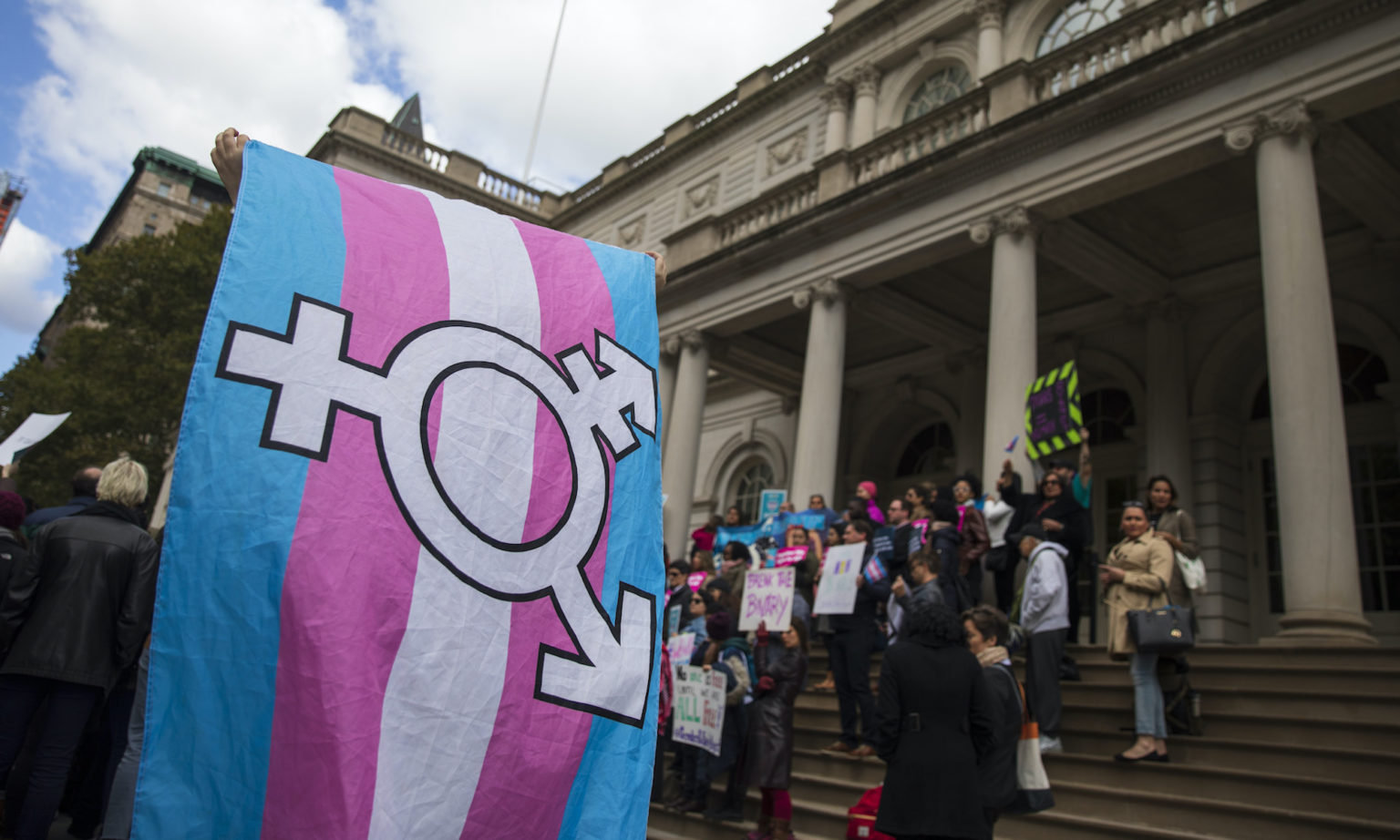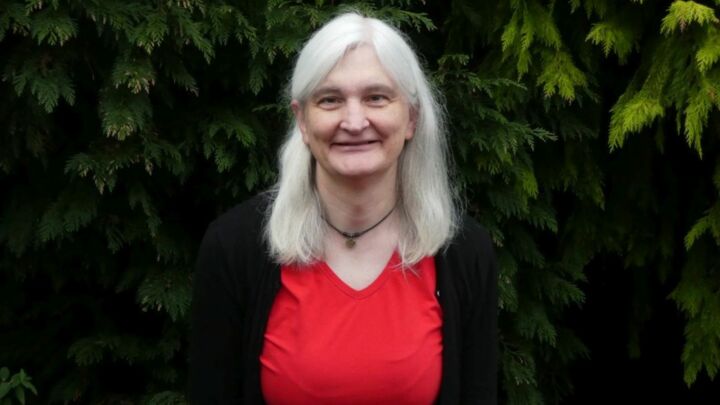
Long-read
We are more than our gender
Today’s gender determinists are forgetting what really makes us human.
The incessant coverage of sexual-harassment allegations lends weight to a view, gaining ground before the recent #MeToo panic, that there is something wrong with men.
We’re told that: ‘Sexual harassment is neither a Republican problem nor a Democratic one. It’s a man problem.’ To some, the urge in men to abuse is hardwired – ‘male mechanisms of desire are inherently brutal’. To others, men are not born monsters but become predatory through ‘pressure to conform to a damaged and damaging kind of masculinity’. Both feminists and men’s-rights activists criticise ‘toxic masculinity’, ‘the baggage of being a bloke’, for propagating the view, expressed by boxer Amir Khan, that real men don’t cry.
Another discussion rumbles alongside the #MeToo outrage. Natasha Devon, the government’s former mental-health tsar, told headteachers last week that addressing pupils as ‘girls’ or ‘ladies’ means they are ‘constantly reminded of their gender’. She continued: ‘You can’t presume that because somebody presents as a gender that that’s what they are.’ This kind of thinking has meant that a growing number of schools now have gender-neutral uniforms and toilets. Meanwhile, Liam Madigan (now Lily Madigan), the transgender teenager newly elected as Labour’s women’s officer for Rochester and Strood, has caused further controversy by applying for the party’s Jo Cox Women in Leadership Programme. A councillor supporting Madigan’s application said that ‘Labour had already decided transgender women are women’, adding, ‘I am supporting Lily because fundamentally I believe that she is a woman’.
This raises the question: is gender simply a matter of belief? If someone believes they are a woman, does that make them a woman? Assumptions once taken for granted are now called into question – we are told not to assume that a child who looks like a girl is a girl. But although gender is becoming ever more detached from biological sex, gendered personality traits and attributes, so-called ‘male mechanisms’, are increasingly presented as entrenched characteristics of a person – either determined by our genetic make-up or a product of a malignant society. Challenging the restrictions of biology and questioning sexist stereotypes allowed men and women greater freedom to determine the course of their own lives. Today’s new orthodoxies risk imposing new limitations on our sense of what men and women are capable of being.
The construction of gender
The extent to which sex determined not just a person’s role and position in life but their personality and character began to be seriously questioned in the second half of the 20th century. Feminists such as Germaine Greer argued that women were not naturally more submissive, less intelligent, more emotionally fragile or more obsessed with their appearance than men, but that women acted like this because it was what society expected of them. In The Female Eunuch, Greer writes: ‘I’m sick of being a transvestite. I refuse to be a female impersonator. I am a woman, not a castrate.’ Greer was in no way denying her biology; rather, she was rebelling against the restrictive femininity she felt obliged to embody.
In 1955, the psychologist John Money drew a distinction between sex and gender, that is, between biology and feminine or masculine behaviour and characteristics. The feminists of the 1960s and 1970s were attracted to the view that people were born male or female, but what it meant to be a woman or a man was shaped through the individual interacting with family and peers – their experiences at school and work as well as their exposure to the media and advertising. This was not to deny biological differences between men and women; it was not even a denial of a connection between sex and gender. But it held out the promise that with social, economic and political changes, the roles and expectations placed upon males and females alike could be expanded, thus liberating both men and women.
Since this time, the role of biology in shaping individuals has been downplayed and the significance of culture and society has been increasingly emphasised. Children’s picture-books showing dad going off to work while mum stays at home; talk of men as doctors and women as nurses; toy cars for boys and dolls for girls – all have been criticised for coercing boys and girls into acting out a stereotypical masculinity or femininity. The determination to challenge stereotypes speaks to a view that the differences between boys and girls, and later between men and women, are not naturally occurring, but emerge because of the way children are socialised and the role models they encounter.
Social determinism
Peggy Orenstein, writing in Cinderella Ate My Daughter, argues that ‘the more mainstream media girls consume, the more importance they place on being pretty and sexy’. Looking to the media (or culture more broadly) to explain gender differences does not deny the existence of biologically distinct boys and girls. But it does suggest that the role of biology in shaping the personalities and behaviour of boys and girls is less important than the culture they inhabit. The obsession with children – their clothes, shoes, toys, books and songs – typifies the way in which the role of the individual in negotiating his or her own response to both biology and society has been abandoned. By this argument, we might be liberated from biology, but we are no more than a product of our culture.
The gender theorist Judith Butler goes further. She argues that not only gender but sex is socially determined. Gender, Butler argues, is enacted through performance, but it is a performance people have done to them – there is no ‘doer’, no ‘volitional agent’ behind the act. As Butler puts it: ‘There is no gender identity behind the expressions of gender; that identity is performatively constituted by the very “expressions” that are said to be its results.’ The current focus on gender neutrality takes us beyond simply challenging stereotypes. It suggests that any gender distinctions are an act of violence as they compel a particular performance. Sex no longer precedes or determines gender – the social construct is all.
Butler’s denial of a biological female behind the performance of womanhood marks a break between gender theorists and radical feminists. For radical feminists, both the separation of sex and gender, and the argument that gender is socially constructed, are an important means of challenging women’s oppression. It shows that women are not naturally inferior – or even different – to men, but that society coerces women into inferior positions. One of the main ways this coercion is said to take place is through male violence against women. To be a woman is to be female, and therefore at risk from men.
Today, radical feminists (often derided as ‘trans-exclusionary’, or ‘TERFs’) are most vocal in arguing that being a woman is more than just a belief. They argue that trans-women have never experienced the systemic male violence that born-women regularly endure. Single-sex spaces, such as toilets, changing rooms and prisons, have become such a flashpoint because, to the radical feminist, women need places where they can be safe from male violence and intimidation. To the transgender activist, such spaces represent a threat to their ability to define themselves in opposition to their biology.
Bringing biology back in
For those who argue, with Butler, ‘that identity is performatively constituted by the very “expressions” that are said to be its results’, biology is making a reappearance. Only now, rather than existence preceding essence or biology preceding performance, it is exactly the other way round – it is performance that is thought to shape biology. Orenstein argues that the social construction of gender, particularly during childhood, has a deep impact: ‘Every interaction, every activity, strengthens some neural circuits at the expense of others – and the younger the child, the greater the effect.’ In other words, a child’s brain changes with gendered experiences: ‘Nurture becomes nature.’
The idea of gender as a social construct held out the promise of liberation from the strictures of biology. But today, gender is more firmly entrenched, and more essentialised than ever. Gender might not be located in our genitals any more – but it has moved to our brains. Both transgender activists and gender theorists share a belief that there are two different types of brains: one pink and one blue. We cannot know, simply by looking at a person, whether they have a blue brain or a pink brain. And, because our actions might create the blue or pink brain, the act of dividing people into one of two categories at the moment of birth becomes an arbitrary imposition. This represents a complete about-turn from the position put forward by feminists in the 1960s and 1970s: today, sex is considered arbitrary, but gender is innate and fixed. Gender is found in our brains rather than our physical bodies – it’s what’s in our heads that defines us, not what’s between our legs.
That gender exists in our heads is not an argument which suggests that people can choose their gender identity. Gender is not a mere feeling, or a passing whim. The gender that exists in our heads is, according to gender theorists and transgender campaigners alike, as real and immutable as physical genitalia – it’s just not visible to the naked eye. According to this way of thinking, transgender people are most authentic because, they, uniquely, know what type of brain they have and seek to bring their physical appearance in line with its dictates.
Pink brains, blue brains
In opposition to the idea that sex is irrelevant and gender is a performance compelled by society (a mere social construction, albeit one so profound it can influence the structure of the brain) comes a reassertion of inherent differences between the sexes determined by our biology. Stephen Pinker is critical of the ‘blank slate’ idea that ‘the human mind has no inherent structure and can be inscribed at will by our society’. He describes the blank-slate view, where beliefs and desires are replaced with stimuli and responses on one hand, or ‘located in cultures and societies rather than in the heads of individual people’, and on the other hand as having become ‘entrenched in intellectual life’. Pinker argues the blank-slate approach to human nature reifies society and drives identity politics. Arguing against a blank slate, and for the existence of natural differences between the sexes, is appealing; it has the attraction of common sense.
From evolutionary psychology comes the argument that, far from being a blank slate, biological differences between the sexes shape human nature. The existence of natural sex-differences is said to be found in the behaviour of animals and in characteristics shared by people in widely different cultures and historical periods. Evolutionary pressures on males and females, as well as the hormones the fetus encounters in the womb, have produced two distinct types of nature and, according to Simon Baron Cohen, this results in two distinct types of human brains, ‘grounded in our neurophysiology’. Cohen’s female brain is characterised by individuals in whom empathising is stronger, while systemising is stronger in the typical male brain. Cohen points out that not all men have the male brain and not all women have the female brain although, by and large, he does link brain type to sex.
Cordelia Fine, author of Delusions of Gender and Testosterone Rex, questions the science behind brain-based sex differences. She points to studies showing that a man and woman selected at random and tested for empathy show the woman scoring lower than the men about 40 per cent of the time. Psychological tests, Fine suggests, are influenced by the prior assumptions of participants: people act out the gendered expectations they think the researchers hold of them, and moderate how they want to appear to others. Fine does not deny all brain differences, rather, she argues that ‘the sheer complexity of the brain makes interpreting the meaning of any sex differences we find in the brain a very difficult task’, with one problem being the ability to simply know which differences are real and which are spurious. More complex still, Fine suggests, is discerning what sex differences in the brain mean for differences in the mind.
What’s notable is that despite the apparent antagonism between transgender activists and evolutionary psychologists, we have arrived at some remarkable points of agreement: gender differences are fixed and innate, they are evident in our dispositions and inclinations and stem from our female or male, pink or blue brains. The difference between the two groups is the perceived relationship between bodies and brains. For transgender activists, any relationship is entirely arbitrary. Whereas for the evolutionary psychologists, there’s not just a strong correlation between female bodies and pink brains, but often a causal relationship, too.
More than our brains
The distinction Fine draws between brain and mind is crucial. People are no more reducible to their brains than they are reducible to their genitals. Our consciousness, our ability to act on, or in opposition to, our biology, rather than simply be determined by it, is what distinguishes human beings from animals. The developmental psychologist Helene Guldberg points out that, ‘our genetic relatedness to the great apes does not necessarily tell us much about what it means to be human’ because animals ‘lack any conscious awareness of what they are doing.’ ‘They are not able to contemplate the best course of action before acting’, she argues, ‘or to reflect on what they have done afterwards.’
Writing in The Second Sex, Simone de Beauvoir pitched a woman’s individual agency in determining her destiny as a retort to the then dominant biological constructions of womanhood. ‘It is not nature that defines woman’, she argues, ‘it is she who defines herself by dealing with nature on her own account in her emotional life’. De Beauvoir did not deny the influence of biology on human nature, but argued, importantly, that the way we respond to biology is determined both by society and by people as individuals. As Guldberg points out: ‘Human beings are unique in that we have created culture – or civilisation – and in the process we have made ourselves.’
Thanks to technological advances, a woman today can discover she is pregnant in her own home and only a few days after conception. She can then think about her future life, knowing she is pregnant. A female animal can be pregnant, and may even act differently, but has no conscious perception of being pregnant and cannot envisage how her life will change. A century ago, a woman discovering she was pregnant would have had only a few choices to make about the direction of her future. Today, women (especially wealthy, Western women) are able to decide whether or not to continue with the pregnancy, whether to continue working or whether to become a full-time mum. What it means to be pregnant is different for humans and animals, and varies according to both the society people have created and the preferences and circumstances of individuals.
De Beauvoir emphasised a woman’s ability to shape her own destiny. Today, this view is challenged from all directions. To some, we are a product of society – of the toys we are given, the books we read and the media we consume. To others, we are a product of brains that may or may not correspond to our physical bodies.
Sex differences certainly exist. We can see that men are, on average, taller, heavier and stronger than women. When we look at averages compiled from large groups of men and women, studies suggest other differences emerge: ‘Women are somewhat more empathic than men, whereas men tend to more powerfully experience the emotion of sexual jealousy… Men tend to be better able to rotate a dimensional object in their mind and to recognise, say, an upside-down character, whereas women excel at locating an object in a visual field.’ Average differences between typical men and women exist, although, at a time when we have a tendency to see every issue through the prism of gender, these are perhaps more likely to be overstated.
But determining the cause of these differences, the exact balance between nature and nurture, is virtually impossible. People do not exist as biological entities separate from society. Children are born into an already existing world, and from the moment of birth their biology is brought into interaction with other people. As Fine puts it: ‘Everything we do – be it maths, chess, childcare, or driving – we do with a mind that is exquisitely sensitive to the social environment around it.’ People cannot avoid socialisation, but they can, to some extent, determine for themselves how much they choose to accept or reject it.
Today, dominant understandings of gender disregard people’s own sense of agency in making their own life choices and shaping their own personality. Neither biology, nor our brains, nor society, just happen to us – we also, individually and collectively, determine how we respond to them. As Guldberg puts it: ‘We are the only species that is not constrained by our biology. Our biology is the precondition for our humanity, but our instincts are transformed into something very different as a result of human consciousness and culture.’
Of course, not everyone gets to react to biology and society in conditions of their own choosing, and we might not always approve of the choices other people make. The contempt with which some feminists describe mothers who dress their daughters in pink, or young women who get cosmetic surgery, shows that some gendered choices are more highly regarded than others today. Back in 1970, Germaine Greer wrote: ‘It takes a great deal of courage and independence to decide to design your own image instead of the one that society rewards, but it gets easier as you go along.’ We need to challenge the view held by today’s many determinists that our gender determines who we are.
Joanna Williams is education editor at spiked. Her new book, Women vs Feminism: Why We All Need Liberating from the Gender Wars, is out now.
Picture by: Getty.
To enquire about republishing spiked’s content, a right to reply or to request a correction, please contact the managing editor, Viv Regan.








Comments
Want to join the conversation?
Only spiked supporters and patrons, who donate regularly to us, can comment on our articles.